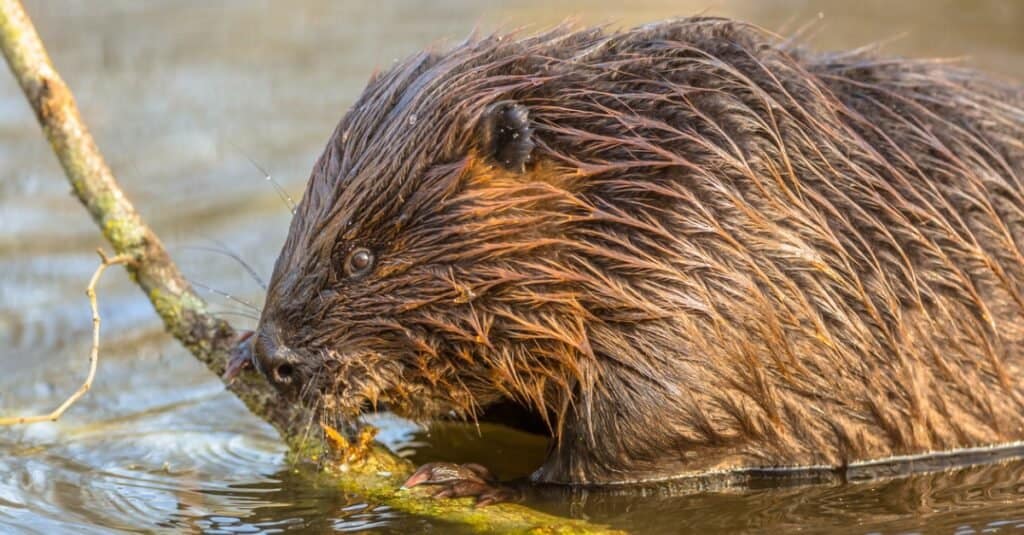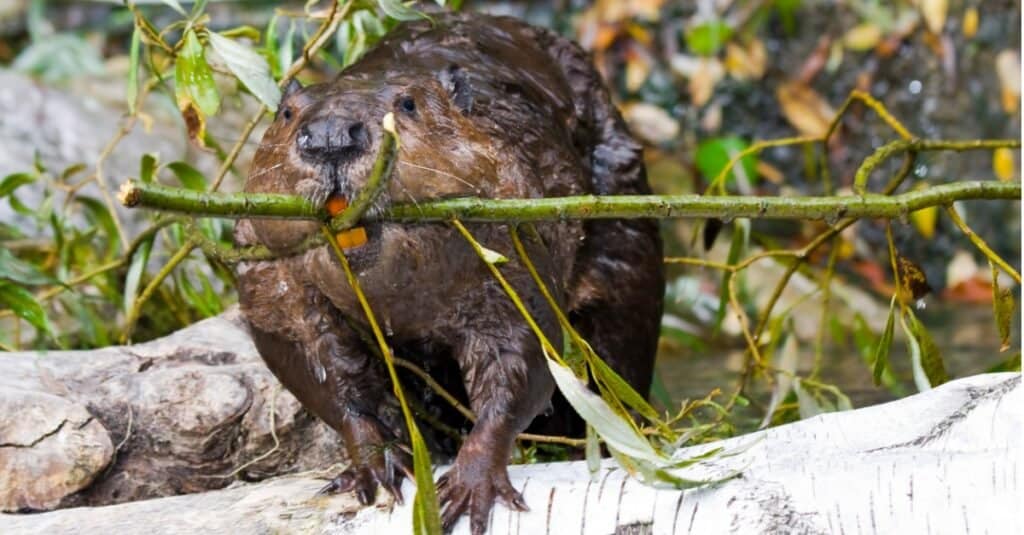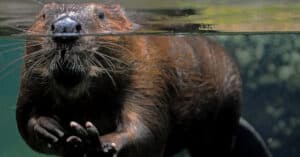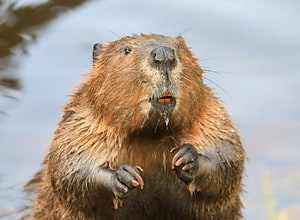Beavers are large semi-aquatic animals that are best known for their ability to construct dams. They are unique animals and are incredibly important to the ecosystem. Beavers have stocky bodies and large tails, which often makes them look like rodents. In fact, the question “are beavers rodents?” is often asked. But are they really rodents?
In this article, we’ll dive into everything to do with beavers and find out whether they really are rodents. We’ll also learn about how they have adapted to their lifestyle and talk about what makes beavers so important, including how they manage to create entire new habitats both for themselves and other animals. So, join us as we discover whether beavers are rodents or not!
About Beavers

Beavers have stocky bodies with large heads and brown or grey fur.
©Ghost Bear/Shutterstock.com
As one of the most industrious and hard-working animals around, beavers are perfectly adapted to their lifestyle in several ways. They have stocky bodies with large heads and brown or grey fur. They have hand-like front feet and webbed hind feet and have a distinctive paddle-shaped tail which makes them extremely capable swimmers. Their bodies are typically between 31 and 47 inches long, while their tail is between 10 and 20 inches long, and they have a streamlined appearance when in the water.
There are currently two species of beaver alive today – North American and Eurasian. On average, the Eurasian beaver is slightly heavier and longer than its North American counterpart.
Beavers live in freshwater habitats, such as lakes, rivers, streams, and ponds. They have a herbivorous diet and eat grasses, aquatic plants, and tree bark. Their stocky necks and powerful jaws are essential for allowing them to carry felled branches across the land and into the water. As an adaptation to their aquatic lifestyle, their lips can close behind their incisor teeth which means that they can chew while underwater. Additionally, their nostrils and ears can close while they are underwater, and nictitating membranes cover their eyes. Beavers can even hold their breath for up to 15 minutes!
Are Beavers Rodents?

Beavers are large, semi-aquatic rodents.
©iStock.com/CreativeNature_nl
Beavers are rodents. They are the largest rodents in North America and Eurasia and the second-largest rodent in the world, behind only the capybara (which can be more than 4 feet long). Beavers are from the order Rodentia, which is the largest order of mammals. In fact, around 40% of all mammals in the world are actually rodents. Beavers possess the main characteristics of rodents, and these characteristics are particularly suited to their lifestyle.
What Big Teeth they have!
Beavers have particularly large teeth, and their upper incisors are often one inch long. Beavers – like all rodents – have incisor teeth that grow continuously throughout their lives. These teeth are the main defining feature of rodents, and they mean that rodents have to chew almost constantly just to keep their teeth from becoming too long for their mouths. To do this, beavers chew on a wide range of plants, twigs, bark, and even entire trees. Beavers are capable of felling an eight-foot tree in only five minutes, so that is some serious teeth that they have!
As beavers chew on wood all day, they need their teeth to be really, really sharp, and this is where a unique little trick that all rodents possess comes in handy – self-sharpening teeth. That’s right – rodents’ teeth literally sharpen themselves! This is because they are made from extremely tough enamel on the front of the teeth, while the rear is made from softer dentin. The action of chewing means that the softer dentin wears away quicker than the hard enamel and creates chisel-shaped teeth. The chewing action also works like scissors to sharpen the edges of the teeth.
Beavers are one of the most effective rodents in the world when it comes to chewing (given how they can chew down entire trees), and this means that as well as needing their teeth to be sharp, they need to be strong too. You might have noticed that beavers have distinctly orange teeth and wondered why. Well, this is because the enamel on their teeth contains iron compounds to make them even stronger and more durable. So, the iron compounds they contain are the reason that beavers have orange teeth.
Beavers are Nature’s Engineers

Beavers fell trees and carry the branches into the water to construct their dams.
©iStock.com/belizar73
One of the most fascinating things about beavers is their ability to construct dams, which is why they are often called “nature’s engineers.” Beavers are some of the most active and hard-working animals, which is where the term “busy as a beaver” comes from. They are incredibly intelligent and are believed to have an advanced brain with higher intelligence than many other rodents. Beavers are highly attuned to the sound of running water. Incredibly, whenever they hear running water within their dam, they jump into action to repair it immediately.
Beavers build dams to create ponds for them to live in. Dams are built from the branches of trees that they have felled. Stones, mud, and grass are also used to create a completely watertight design. Dams can be anything from a few feet long to up to half a mile (the longest dam discovered). Lodges are built either on banks or in the open water on a platform of sticks. Lodges are typically dome-shaped structures.
Beavers are incredibly important to the ecosystem as they can alter water flow. This can flood areas to create new wetland habitats. This benefits both the land and many other animals in the area. Additionally, beaver dams can help to reduce flooding further downstream. This is because flood water is released over a much longer period rather than in an initial rush. This can also help to prevent river banks from erosion. Not only that, but by felling trees, beavers open up areas of woodland, which allows other plants to grow that might have otherwise struggled from lack of light or space.
Thank you for reading! Have some feedback for us? Contact the AZ Animals editorial team.








